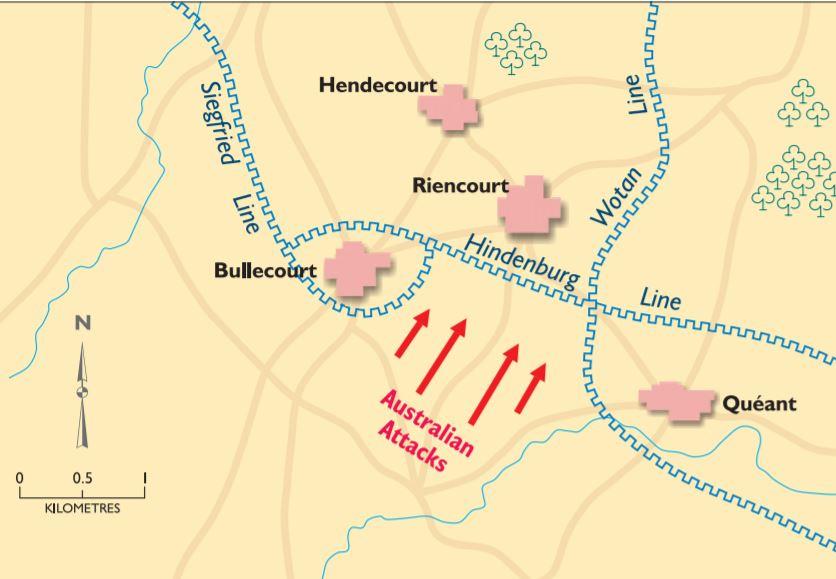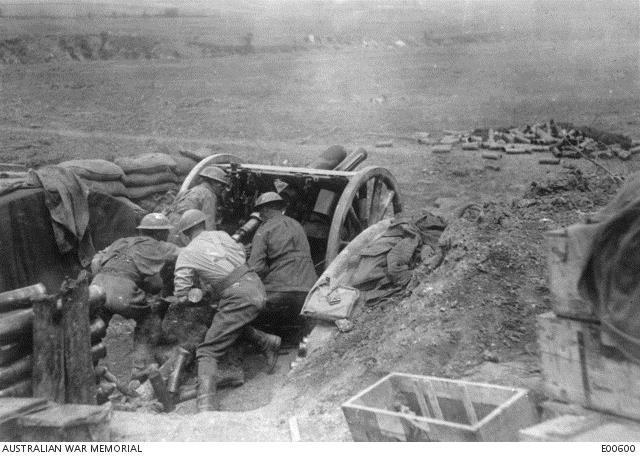The Germans had established strong defensive positions near this village at the junction of their Siegfried Line and Hindenburg Line. In the battle known as First Bullecourt, the British 62nd Division and the 4th Australian Division were ordered to capture this key defensive bastion. After a false start on 10 April, the main attack was launched at 4:30 am on 11 April by the 4th and 12th Brigades, supported by 12 tanks. The Germans were ready and waiting with massive supporting artillery and machine-gun fire which they poured into the bowl-shaped battlefield that became an instant killing ground. Some Australian infantry gained the enemy trenches, but were unsupported by their own artillery. The tanks failed them; only one reached the front line and the rest either broke down or were destroyed. Surviving troops withdrew under fierce German counter-attacks. The 4th Brigade had 660 men left from 3,000 who attacked. The 12th Brigade suffered 950 casualties and 1,170 men were taken POW. There was much bitterness about the failure of the tanks. On 3 May, another attempt was made by the 2nd Australian Division and the 62nd Division, this time without tanks. The attacking formations were the 5th Brigade (NSW) and the 6th Brigade (Vic). On the right flank, the units of 5th Brigade suffered enormous casualties due to overwhelming machine-gun fire. Again, the attack stalled and the survivors withdrew. The 2nd Division lost 7,000 men in this battle, which was followed up by more attacks from relieving formations. After all this bloodshed, the Germans quietly withdrew from their positions on 15-16 May, determining that it was “not worth holding on to.”
Bullecourt
This listing refers to two major battles fought near the village of Bullecourt in northern France in April and May 1917



